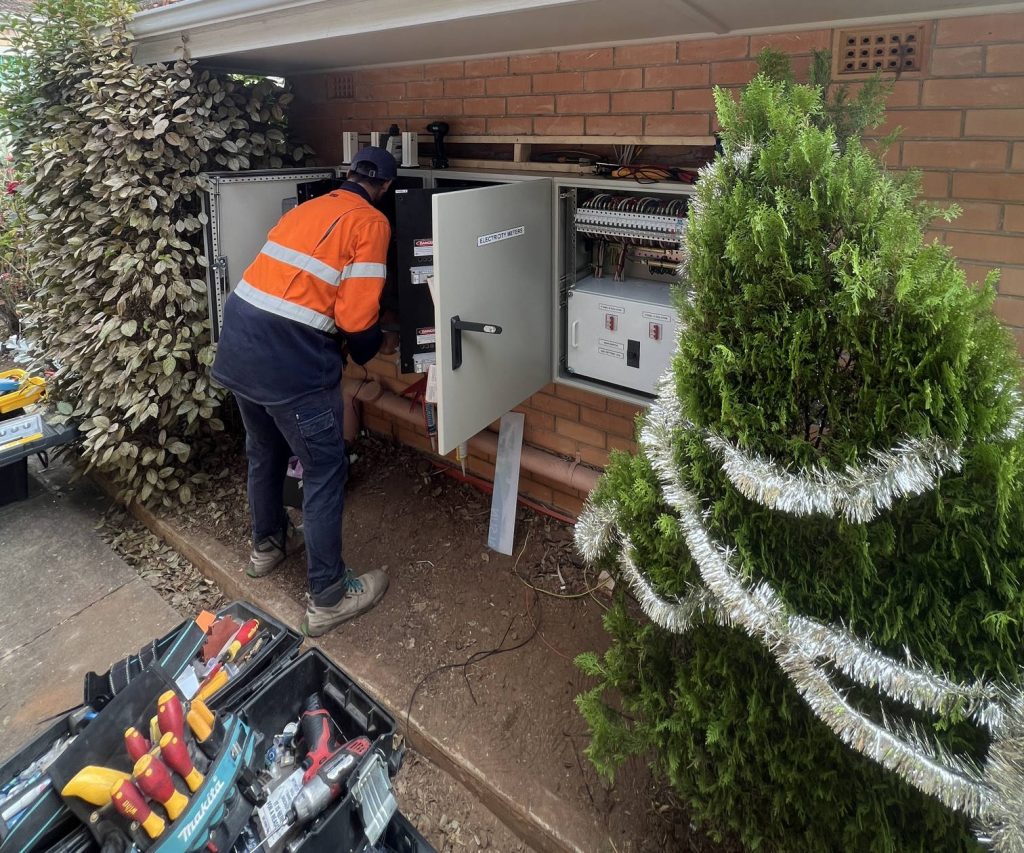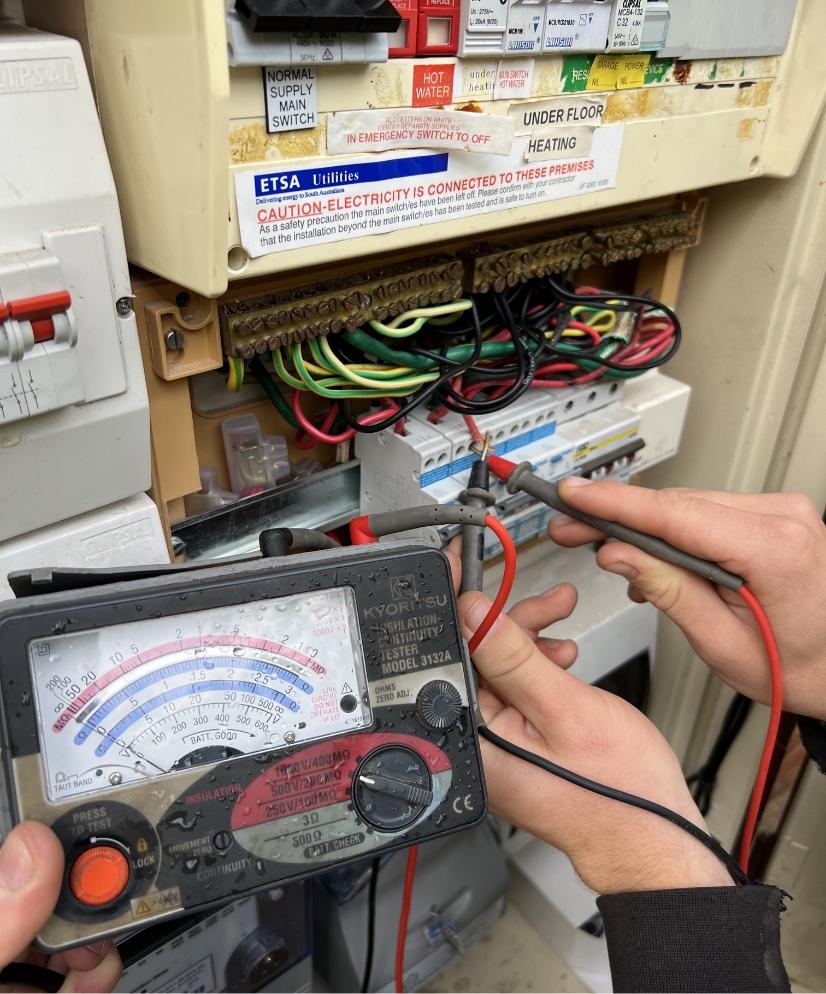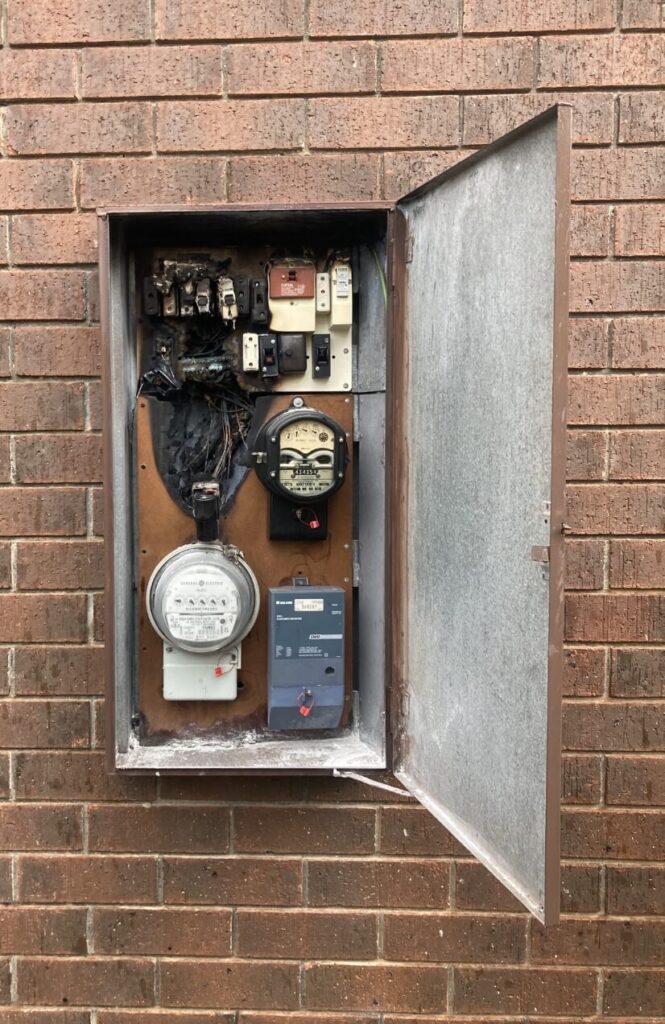Electrical Switchboards: A Comprehensive Guide

What is an Electrical Switchboard?
An electrical switchboard safely distributes electricity throughout circuits inside a home or facility. It works by dividing the power feed into smaller load circuits.
A switchboard is composed of either a single panel or an assembly of multiple panels and frames. It also consists of switching devices or circuit breakers for overcurrent protection.
C & R ALL SPARK ELECTRICAL ARE YOUR LOCAL ELECTRICAL EXPERTS
Servicing All of Adelaide & South Australia
How Does a Switchboard Work?
An electrical system is a network of components that supply, transfer and utilise electricity. The role of electrical switchboards in this system is to distribute electricity from one source to another. The switchboard moves the electricity through feeders from a major power source. It then relays the power to other locations within the reach of the power grid.
The switchboard consists of electrical panels with switches, buses, and protective devices. The main function of the board is to regulate the flow of electricity. It distributes it further into smaller branch circuits, evenly, through the devices. It balances electrical loads by ensuring that the amount of electricity it receives is roughly the same as the amount it distributes.

Electrical Switchboard Components
Typically, switchboards consists of a single or multiple distribution sections. Below, we list down the main switchboard parts and their functions:
Frame
The frame of the switchboard is a metal, rectangular structure that houses and supports the other components. It comes in different heights, ranging from 32 inches to 90 inches.
Bus
The bus is mounted on the switchboard frame. It has to be set firmly in place without any damage. The bus distributes electricity from incoming cables to other circuit devices. There are two types of buses: a horizontal bus and a vertical bus.
Incoming Cables
Incoming cables facilitate the flow of incoming power supply which is then divided into separate circuits. Switchboards are built to accommodate both incoming and outgoing cables, which are usually brought into the board from the top (through the conduit) or bottom.
Circuit Conductors
Conductors are connecting bodies, linking the serving utility to the wiring system of the premises. It allows the flow of electric current from a power source to through the distribution section of the switchboard. Conductors entering or exiting the switchboard must be installed within the enclosure in accordance with the approved space.
Instrumentation
Instrumentation generally refers to other switchboard equipment and accessories, such as transformers, but is usually associated with electric metres. The switchboard’s instrument is installed permanently on the panel, and designed to be easily read from a distance.
Overcurrent Protection Devices (OCPDs)
Overcurrent protection devices to prevent electrical overloads and overcurrent damage. They restrict the current to the normal rate and disengage the short circuit. Fuses, safety switches and circuit breakers are classified as overcurrent protection devices.
Circuit Breakers
Circuit breakers are temperature or current-sensitive equipment inside a switchboard that offer short-circuit or over-current protection. They can run automatically, or can be controlled manually to turn off the electrical flow to a circuit. Circuit breakers are usually encased in an insulating material such as fibreglass or moulded plastic.
Safety Switches
Safety switches are used to manually open and close circuits. It is sometimes combined with a fuse within a single enclosure to prevent short circuits or overloads.
Switchboard Enclosure
As the name suggests, enclosures protect the switchboard structure and equipment from varying environmental conditions and high current applications. It is made from a variety of materials and finishes, including aluminium, stainless steel, as well as powder coated metal.
Types of Electrical Switchboards
Electrical switchboards are classified based on their application and main components. Here are the different types of electrical switchboards:
General Purpose Switchboards
General purpose switchboards are switchboards that consist of the usual integral components, such as insulated or moulded case circuit breakers, fused safety switches, metering and overcurrent protection devices. It is used in a wide range of applications, including residential and commercial properties.
Modular Switchboards
Modular systems are used in larger residential and commercial areas with more robust and improved capabilities than general purpose switchboards. However, it features the same standard parts of a switchboard that has been customised to allow internal arc fault containment.
Mechanical Services Switchboards
Mechanical services switchboards are switchboards that are powered by mains and an emergency power source. They are a reliable switchboard solution with a wide range of applications, including car park ventilation, fire alarm interfaces, air conditioning, and water cooling or heating systems. Mechanical services switchboards can be expanded to accommodate an increase in capacity.
Every Connection Counts
Australian Standard for Electrical Switchboards
The basis for today’s electrical switchboard design is the Australian standard AS/NZS 61439. It encompasses the new series of standards for low voltage switchboards, switchgears and control assemblies. The new standard establishes the testing procedures for the ease of designing and verification for switchboard manufacturers, and reconciles the rules and requirements of local and international switchboards.
The Australian standard AS/NZS 61439 was introduced in 2016, and has been implemented since 2021. Consumers and manufacturers have to comply with this standard and ensure that their switchboards are compliant.
Requirements for Switchboards
Switchboards that have been built and installed need to be tested and verified in accordance to the new standards based on:
- Durability of Parts and Materials
- Clearance and Creepage Distance
- Dialectric Properties
- Temperature Restrictions
- Mechanical Operation
- Internal Separation
- Level of Protection
- Ability to Withstand Short Circuits
- Electric Shock Protection
- Reliability of Protective Circuits
- Internal and External Connections
- Electromagnetic Compatibility
Maximum Height for a Switchboard
According to IE rules, switchboards should be at a fixed height at 1.5 metres above the floor and not higher than 2 metres. This enables operators to read instruments, and operate the devices, such as handles and push buttons.
Selecting the Right Electrical Switchboard
Electrical switchboards are a key component of an average home’s power distribution system. As such, it is important to choose one that is in the correct specifications and meets your safety needs. If you need to modernise or upgrade your switchboard, you may do so with the aid of a domestic electrician in Adelaide.

Factors to Consider When Choosing a Switchboard
Below are a few key aspects to pay attention to when choosing a switchboard:
Load Capacity
A maximum demand needs to be calculated when working out your load capacity & is dependent on the supply you have coming in from the street.
Protection
All electrical circuits and conductors must have overcurrent protection; with all final sub circuits 32 amps and under requiring a RCBO or RCD to be installed.
Scalability
The switchboard should come in the right size to accommodate modules, and offer scalability. This is especially crucial if it’s located in a business or commercial facility. Floor space and installation time is critical, and some switchboard manufacturers and installers can build integrated switchboards that enable flexible power distribution. Normally a 10% allowance will be given if there’s adequate room via the electrician doing the design.
Pricing
The price of electrical switchboards is another aspect to look into if you want to buy a replacement or upgrade yours. Switchboard costs are dependent on their size and capacity. You may reach out to our team to request an estimate for your project. Chances are we’ve seen it before and can point you in the right direction with a simple email requesting a photo of your current board.
Professional Assistance
A final consideration has to be made regarding who’s going to work on your switchboard. In order to reduce cost without compromising quality or safety. C&R All Spark Electrical can provide you a quote depending on the scope of services you may require.
You want to ensure;
- You’re speaking with an experienced electrical contractor
- Has experience with organising third parties such as retailers, trenching contractors and SAPN etc;
- Has great communication skills & has completed a similar project before
Every Connection Counts
Steps In Installing An Electrical Switchboard
C&R All Spark Electrical services greater Adelaide, as well as surrounding suburbs. It is advisable to hire a domestic electrician, as they possess the know-how to install an electrical switchboard properly at your premises. Below is an overview of the steps of how the electrical switchboard will be installed at your home:
Preparation
You will receive a request for more information from our office requesting photos to enable us to give you an estimate.
Once an estimate has been given
A site visit may be arranged.
Once the quote has been approved
We need a copy of your most recent electricity bill so paperwork can be lodged on your behalf to your retailer and SA Power Networks.
Your project will then be scoped by SA Power Networks for them to give costings of their works.
Once all paperwork has been received
After all parties have attended site to ensure the scope of works is correct we can then go ahead and arrange bookings with the associated third parties.
On the day of the change over
You will have no power for the entire day.
Your switchboard will be removed and either a re-wired or replaced depending on the scope of works with a new one.
SA Power Networks will then turn back on the power and your retailer will attend to hang your new meter depending on the switchboard upgrade.
Our staff will then carry out the mandatory testing to ensure the safety operating devices are working as they should.
Timing
Depending on the switchboard these works can take anywhere from 6 to 12 weeks, or up to 6 to 12 months.

When Do You Need to Upgrade Your Switchboard?
Your home is due for an electrical switchboard upgrade if your switchboard is old, prone to power outages or faults, or makes bizarre buzzing noises. Listed below are other tell-tale signs that you need a switchboard upgrade or replacement:
- Tripping fuses and circuit breakers when appliances are simultaneously running
- Frequent occurrence of blown fuses
- Overheated cables within the switchboard
- If you have ceramic fuses
- If asbestos panelling is present
- If you have no RCD protection
- If a defect notice has been put on there by your retailer or SAPN
- If recommended by a licenced electrician
With a switchboard upgrade, you will be able to keep your family or employees safe as it prevents electrical fires and hazards. Newer switchboards can withstand the current electrical load of today’s modern appliances. They are also more energy-efficient, helping you lower your monthly power bills, and thus, saving you money in the long run.
